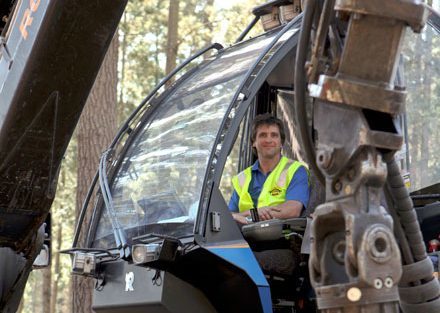
One of New Zealand’s biggest industries is facing a boom, but skilled workers are thin on the ground. Sources: The Marlborough Express, Stuff NZ
Forestry experts in Marlborough say the industry has been branded with an undeserved reputation for poor safety practices; putting potential employees off signing up.
Toi-Ohomai Institute of Technology tutor and former forestry worker Jason Gillespie says technological advances and better safety procedures have helped make the sector safer than ever before. And he says the industry is in desperate need of skilled workers as it faces a boom in business.
“Most people have no idea what’s involved and health and safety is very different to what it used to be; it’s the most important part of what we do. A forestry site high in the hills above Tuamarina in Marlborough.
“If everyone follows the procedures that are in place then there wouldn’t be any problem.
“These days, no-one is allowed in the forest without a radio, everyone has one … each site does extensive training in escape routes. All our students are taught about safety,” said the Blenheim-based teacher.
Josh Howard, 21, is a course graduate who is working on site high in the hills above the Waikakaho Valley near Tuamarina, in Marlborough, for Gale Contracting.
Machinery has taken over some jobs previously done by hand making the forestry industry safer. While he may be new to the industry, he is already making a name for himself and was recently awarded for “Best Performance” for his outstanding skills and contribution to his team.
He says while he was initially “a bit worried” about safety before he started, he quickly realised there was no need to be.
“The course really helped as we talked through everything and we do work experience too.
“It’s a great job and as long as you follow the rules and stay aware of potential hazards there shouldn’t be anything to worry about,” he says.
Figures from the Ministry for Primary Industries show New Zealand’s net stocked planted production forests covered an estimated 1.7 million hectares as of April 1, 2016.
An estimated 3000 hectares of new forest were established in 2015 with radiata pine making up 90% of the planted production forest area.
Tutor Wade Johnson says the industry has “come along in leaps and bounds” since he first started more than 20 years ago. He says people are more aware of potential safety issues.
“The emphasis now is all on identifying hazards and procedures that must be followed. Careful attention is paid to safety at the forestry site 200m above sea level.
“Forestry gets a raw deal because we always seem to get blamed.
“Even if there’s a crash on the highway and a logging truck is involved, it gets put down to be a logging accident. If people stick to the rules then it’s very safe,” he says.





